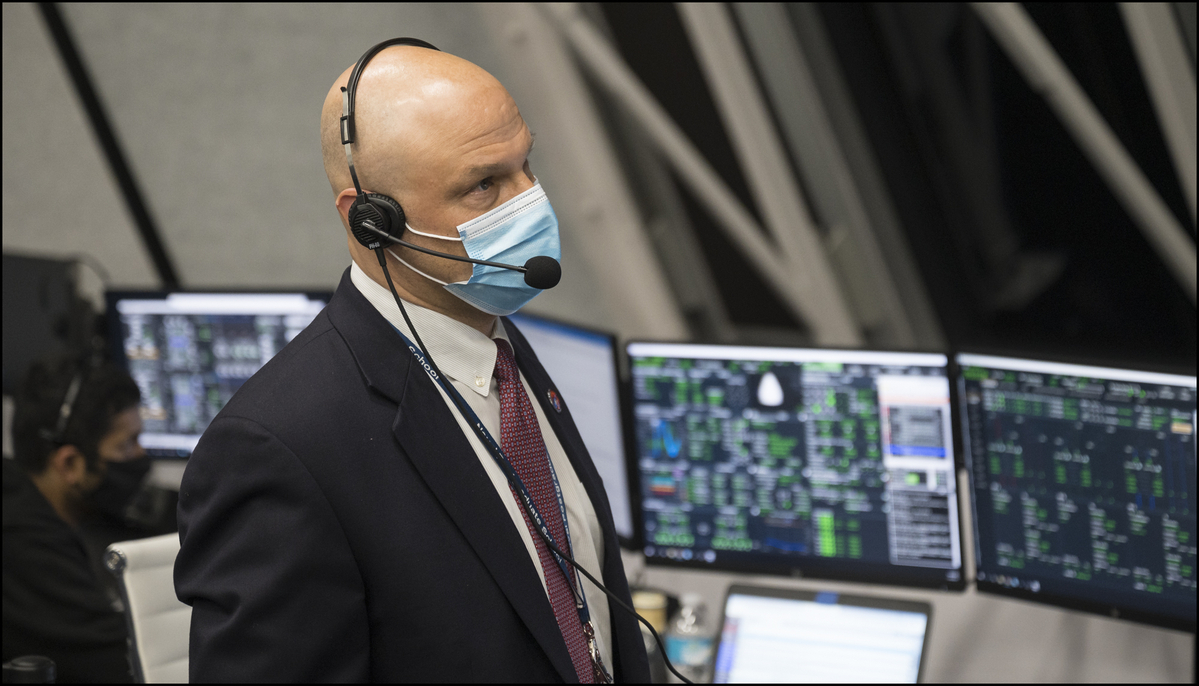
A glimpse behind the curtain at NASA with Mike Hess
Aero alum and Deputy for Safety at NASA talks about partnerships, working in space exploration, and flying across town for lunch

Aero alum and Deputy for Safety at NASA talks about partnerships, working in space exploration, and flying across town for lunch
Mike Hess (BSE ‘91) has developed a different perspective on partnerships during his career at NASA. He’s seen the evolution of the government agency with the revolutionary changes brought about by commercial space innovations and the mission partnerships between NASA and companies like Blue Origin and SpaceX.
“This is an Uber model – it’s a very different way for NASA to operate,” Mike shares. Hess describes NASA as an ambidextrous organization: part of NASA is using traditional methodologies like the upcoming Artemis launch to the moon, while others at NASA explore commercial collaborations in parallel under newer operations, management, and programmatic ways of doing things. “At NASA, as a government agency we typically do things that a commercial entity would find isn’t a good business model (like a lunar base, possibly), while other activities are more appropriately tailored to commercial business. This helps us be responsive to the market, advance collective space exploration, find what works and transition activities as we go,” Hess shares.
“Whether going to free flyer or space stations – our partnership with commercial space organizations is an evolution of how NASA is doing things. It’s impressive that we – as a government entity – have been nimble enough to do these things.”

Hess compares the space industry now to the historic pioneers who explored West of the Mississippi. “Lewis and Clark were a government funded expedition to get to the Pacific. The only way West was on a government trip. Then pioneers developed wagon trains, then the railroad expanded, and big business assumed the role the government established. Space exploration is evolving in the same direction.”
“I’m really happy to be involved in the commercial program from the very inception,” Hess comments. His career at NASA has given him the opportunity to touch every aspect of space flight. Hess worked with commercial crews for the last few years and was the NASA operations manager on the countdown team. He participated in launches for demo 1 and 2, crew 1 and crew 2. (You can see Hess in Netflix’ Return to Space documentary for the launch of crew 2.)
“It’s work I’m excited about – over the years I’ve gotten the chance to work on just about everything at the agency – safety for the James Webb Telescope, reviews for all human space missions, aeronautics, science, human space walks.” Hess’ deep experience led to his current role as NASA’s Engineering and Safety Center Deputy of Safety.
It’s never a dull day for Hess, and with the rapid growth of the commercial space program, upcoming missions to the moon, and beyond, he’s got his work cut out for him. For balance, Hess takes time to unwind in a way that many aerospace engineers do: he flies. It helps to have an airport in your neighborhood, surrounded by aviation families. “If we feel like a burger on the other side of Houston, a friend and I will hop in one of the planes and fly across town.” (A quiet, rechargeable eVTOL will be a welcome addition to his garage in the coming years, we suspect.)
SIDEBAR WITH MIKE
What interested you in aerospace?
I was inspired by the Apollo and Skylab missions. It made me decide to be a rocket scientist by the time I was four.
Tell us about a time you failed.
On STS-87, I was the lead Mission Controller for the spacewalk to rescue a SPARTAN-201 satellite that the shuttle robot arm was unable to grapple. We had to do a spacewalk to manually grab the satellite, and a stuck deployable handrail got in the way of being able to latch the satellite down. There were tense minutes when we had to have just one astronaut hold the satellite while the other fixed the problem. What I learned is I should have made the crew fix the errant handrail first just to be sure, and to always have as-built drawings. We had an as-designed drawing which didn’t show a bracket that turned out to be the interference culprit that nobody could observe.
What advice do you have for students?
For kids -concentrate on math and science and follow what you like to do!
For U-M students – Think big. Consider more broadly than NASA: outside of NASA itself, there are 60,000 contractor employees in aerospace companies, and countless technology startups and innovators. The space arena for careers working on cool tech is extremely broad. There’s so much more opportunity and much more going on than ever before.
Mike Hess is a member of the Aerospace Department Industry Advisory Board.